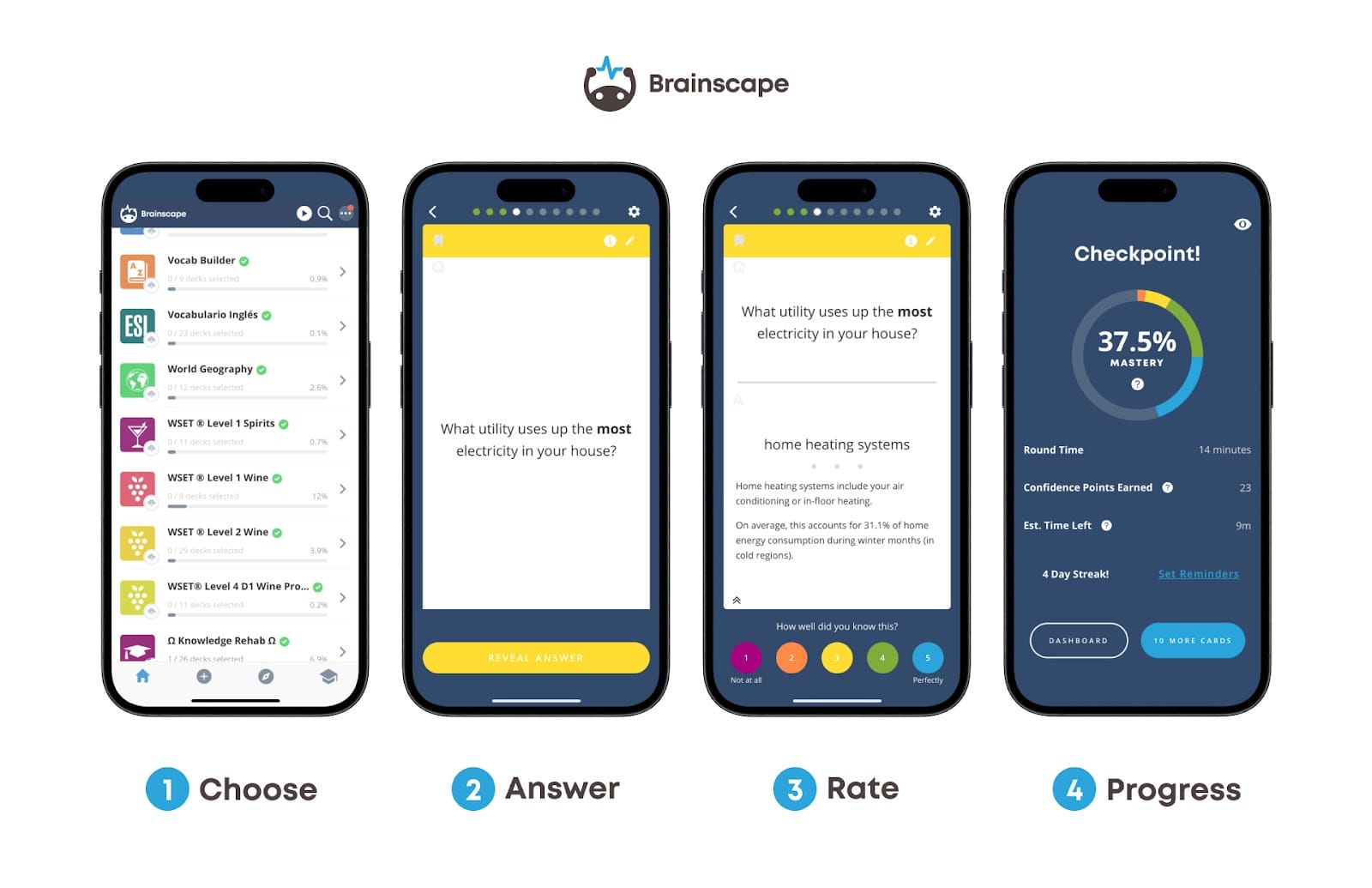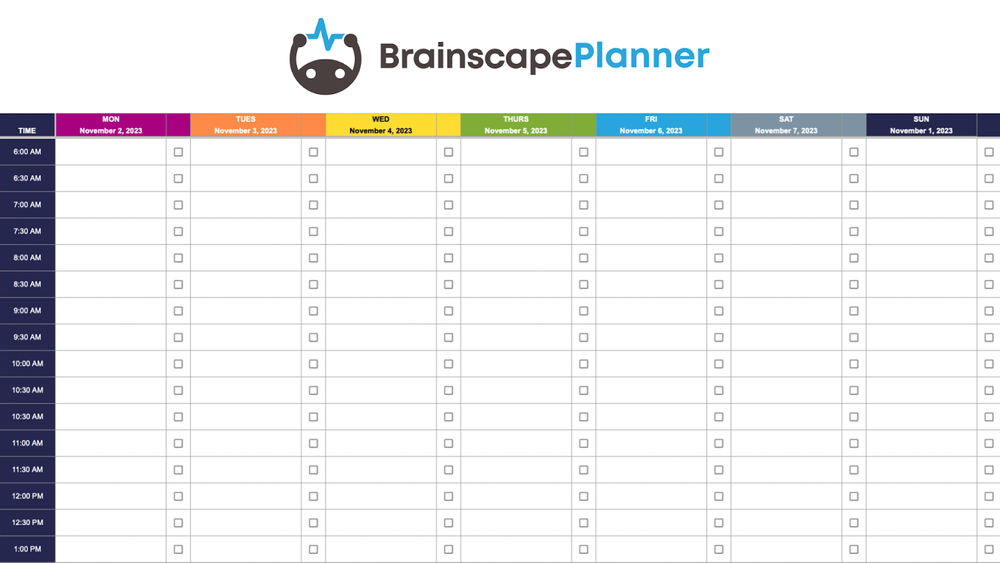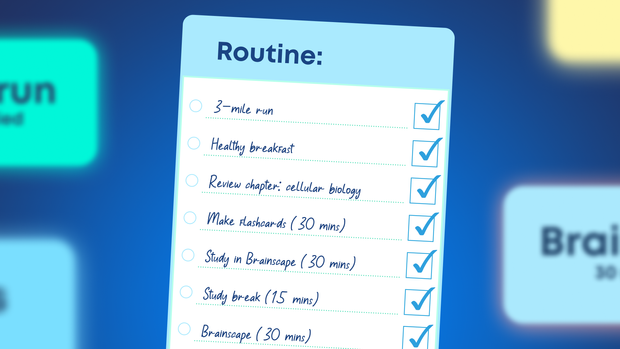Study routines. Wait, stop yawning!
Fine, I’m yawning too. We’ve all heard those two words a million times, usually followed by advice that’s staler than the forgotten bread in a dorm kitchen.
I’m not going to waste your time with the same old productivity tips that don’t work. But what if there’s a way to beat burnout without sacrificing your grades?
Academic success and plenty of free time? It’s possible.
I’m going to show you the evidence-based secrets to actually maximize productivity.
This isn’t just another list of stale bread tips. It’s a science-based roadmap to your perfect study routine. By the end of this article, you’ll have every tool you need to smash your study goals. Let’s start…
Know yourself, know your study routine
Everyone’s brain is different. Well, behaviorally different but biologically same-same. We all fundamentally learn the same way but there’s no one-size-fits-all study routine.
So before you study your subject material, you need to study yourself. You have three major decisions to make about your study routine: when, where, and what.
When is the most productive time of day to study?
Timing is everything. Whether you’re a night owl or an early bird, understanding when your brain is most alert and motivated is the key to optimizing your study routine for productivity. Are you more focused after a workout? Do you summon liquid focus after a cup of coffee? (Guilty.)
It’s time to be both scientist and guinea pig. Experiment with different study times to find your peak productivity window. Once you identify it, build your routine around these golden hours.
This starts with figuring out your chronotype (and whether you’re a lion, a bear, a wolf, or a dolphin). Then, you can schedule your most cognitively demanding learning tasks (e.g. flashcard study) to correspond with your peak productivity hours and taper off to less intense learning (e.g. reading and note-taking) outside of those hours.
Where is the most productive place to study?
Location, location, location. Just like different plants thrive in different climates, you too will learn best in certain physical environments. Some people flourish in the quiet solitude of a library, some people bloom in the hum of a bustling coffee shop, while others grow best as house plants.
You might even prefer doing different learning-related tasks in different spaces (e.g. reading in the library, flashcard study while out on a walk, note-taking in your home study, etc.). Again, you'll only know which space is most productive for you after you experiment a bit.
What are the most productive study methods?
Not all study material is created equal, and understanding the type of knowledge you’re dealing with can shape your study approach.
Procedural (skilled-based) knowledge—like playing the piano or performing a lab experiment—requires practice and repetition. It’s about doing and applying, often best tackled with hands-on learning and active problem-solving techniques.
On the other hand, declarative knowledge, such as memorizing historical dates or learning definitions, requires spaced repetition.
Spaced repetition involves the repeated exposure to individual concepts over and over again until you know them really well, except that the time intervals between exposures are calibrated according to how strong your knowledge is to begin with. If you know a concept well, the repetitions are spaced further apart. If you don't understand a concept well, the repetitions will be closer together.
For this reason, flashcards are the perfect vehicle for spaced repetition: they allow you to break content-heavy subjects down into their atomic concepts and repeat them according to how well you know them. Of course, doing this manually is a pain in the butt but flashcard apps like Brainscape have spaced repetition built into their study algorithms, allowing you to learn so much quicker.

Reading and re-reading a textbook is the least efficient way you’re going to learn and retain the information you need to pass a content-based exam. Flashcards, on the other hand, break that information down into digestible bites and then use spaced repetition to systematically drill you on each concept.
So, for a broad overview of your subject, reading the textbook chapter is a good start. But to efficiently ingrain the facts you need to know to progress, a flashcard app like Brainscape is the best study method.
Tailor your study sessions to match the type of material you're working with, and you’ll find that your productivity and retention improve significantly.
By making informed decisions about when, where, and what to study, you'll set the foundation for study habits that truly maximize your productivity. Check out the following Youtube video on how to improve your study habits for life…
The productivity leafblower―clear those obstacles
Before you can start studying effectively, you need to clear away the distractions that are cluttering your focus. You wouldn't try to study in the middle of the highway (I hope). Distractions, whether they’re physical clutter, noise, or digital interruptions, act as mental traffic jams, blocking your path to productive study sessions.
Start by decluttering your study space. Cluttered workspaces increase indecision and procrastination. A tidy desk with only the essentials can significantly improve focus.
Next, find a spot that’s free from noise and interruptions. If you can’t control the noise, invest in noise-canceling headphones or use white noise or ambient sound to drown out distractions. But be discerning: not all music is good for studying!
Finally, eliminate digital interruptions. Turn off notifications, put your phone on airplane mode, or use apps designed to limit your screen time. Here's a list of our favorite productivity apps. (No paid sponsorships! Just great products).
But what if someone needs to reach me?
There are precious few circumstances in which it’s crucial that you be reached instantaneously. At the very least, you can set your phone aside and check it hourly. The house will not burn down if you aren’t instantly accessible.
Once you clear these obstacles, your brain can cruise on the open road to peak productivity.
Which way are we running? Setting goals for peak productivity
Without clear goals, studying can feel like running on a treadmill—lots of effort, but you’re not really getting anywhere. To ensure that your study time is effective, you need to set clear, achievable goals. These goals will give you direction and purpose, turning your study routine into a focused, goal-oriented process.
Start with the big picture, then break it down into individual brushstrokes. What do you want to achieve this semester? Break these down into smaller, manageable tasks—weekly goals, daily objectives, even hourly targets. Use the SMART framework (Specific, Measurable, Achievable, Relevant, Time-bound) to make your goals clear and actionable.
We learn best when we combine a long-term plan with daily reminders.
As Emily Dickinson wrote, "Forever is composed of nows." (And she was really smart.)
Optimize your study session with active learning techniques
What does studying look like? We often picture someone with their head in a book, reading the same pages over and over again, maybe underlining something.
The truth is: this doesn't work.
Passive reading is like trying to build muscle by staring at a 20-pound dumbbell—ineffective and a waste of time. But like any bad habit, it's so familiar and comfortable that many students trick themselves into thinking it's more effective!
Passive learning is just you trying to feel productive. You're reading the textbook but are you actually retaining anything? Could you pass an exam on the content 24 hours later? Probably not. And if you do learn something, you'll probably forget it days, if not hours later.
To really engage with the material and boost your productivity, you need to incorporate active learning techniques such as active recall. These techniques turn your brain from a passive sponge into an active engine, constantly processing, questioning, and synthesizing information.
Passive learning is sitting back and watching a game. Active learning is playing in it.
(Here are some tips on how to study actively!)
Productivity tools are your friends
It's not just you and a stack of papers against the world. There are countless tools available to help you stay organized, focused, and efficient.
Start with a good planner or digital calendar to schedule your study sessions and track your progress. (Check out our free study planner template here.)

Tools like Trello or Notion are excellent for organizing tasks and managing projects. If staying focused is a challenge, consider using the Pomodoro Technique with apps like Time Stream, which help you work in short, focused bursts with regular breaks.
For note-taking and information management, Evernote or OneNote can help you keep everything in one place, making it easy to review and organize your notes.
Finally, take the guesswork out of spaced repetition and learn twice as fast with Brainscape, a flashcard app that leverages proven cognitive science to help you learn TWICE as fast as those traditional study methods you've been using.
Improvise, adapt, overcome
Even the best-laid study plans can go awry. Life gets in the way—unexpected assignments, personal commitments, or even just a bad day can throw off your routine.
If it's going to last, your study routine needs to be flexible and contain a cushion of time to allow for delays. The ability to adapt and improvise is what will keep you on track, even when things don’t go as planned.
Start by building flexibility into your schedule. Allocate buffer time for tasks that might take longer than expected or for unforeseen events. If you miss a study session, don’t panic—just reschedule it. Or even just devote 5-10 minutes to revising your flashcards.
If a particular study method isn’t working for you, be willing to try something new. Remember, the goal is progress, not perfection. The ability to adapt your routine as you learn what works best for you is the key to long-term productivity and success. Set up strategies and tools that still work after a change in plans.
A final word: you are what you do with your time―so be your best self
At the end of the day, your study routine isn’t just about getting good marks—it’s about shaping your life. The time and effort you invest in studying now will pay dividends in your academic and professional life. Remember, productivity isn’t just about getting things done, it’s about becoming a person who aligns with your goals.
Every minute you spend studying is an investment in your future self. Make sure it’s a wise one. Focus on quality over quantity—understanding and retaining what you study is far more valuable than spending hours in unproductive sessions. You're already making the effort to study. Make it worth your time.
For more awesome articles on study routines and maximizing productivity, check out the Brainscape Academy and YouTube channel.
Sources
- Breitwieser, J., Nobbe, L., Biedermann, D., & Brod, G. (2023). Boosting Self-Regulated Learning with Mobile Interventions: Planning and Prompting Help Children Maintain a Regular Study Routine. https://doi.org/10.31234/osf.io/e56tm
- Deslauriers, L., McCarty, L. S., Miller, K., Callaghan, K., & Kestin, G. (2019). Measuring actual learning versus feeling of learning in response to being actively engaged in the classroom. Proceedings of the National Academy of Sciences, 116(39), 19251–19257. https://doi.org/10.1073/pnas.1821936116
- Dickinson, E. (n.d.). Forever – is composed of nows – (690). Poetry Foundation. https://www.poetryfoundation.org/poems/52202/forever-is-composed-of-nows-690
- Ferrari, J. R., Swanson, H. L., & Patel, D. A. (2021). The Impact of Office Clutter on Remote Working: “I Can’t Work with All This Stuff!” North American Journal of Psychology, 23(1), 155.
- Salaberry, M. R. (2018). Declarative versus procedural knowledge. The TESOL Encyclopedia of English Language Teaching, 1–7. https://doi.org/10.1002/9781118784235.eelt0051
